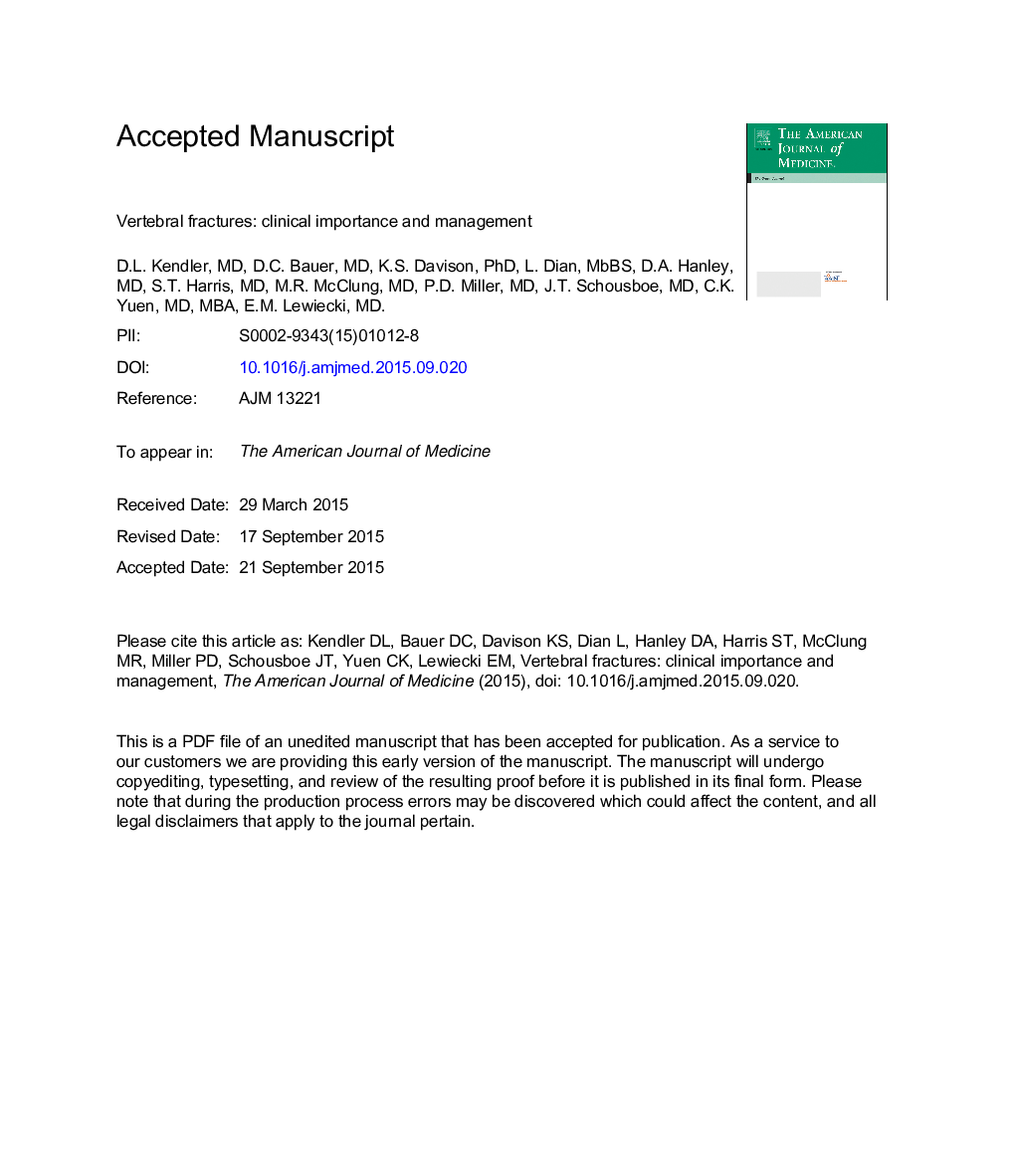| Article ID | Journal | Published Year | Pages | File Type |
|---|---|---|---|---|
| 5876141 | The American Journal of Medicine | 2016 | 31 Pages |
Abstract
Vertebral fractures are common and can result in acute and chronic pain, decreases in quality of life, and diminished lifespan. The identification of vertebral fractures is important because they are robust predictors of future fractures. The majority of vertebral fractures do not come to clinical attention. Numerous modalities exist for visualizing suspected vertebral fracture. Although differing definitions of vertebral fracture may present challenges in comparing data between different investigations, at least 1 in 5 men and women aged >50 years have one or more vertebral fractures. There is clinical guidance to target spine imaging to individuals with a high probability of vertebral fracture. Radiology reports of vertebral fracture need to clearly state that the patient has a “fracture,” with further pertinent details such as the number, recency, and severity of vertebral fracture, each of which is associated with risk of future fractures. Patients with vertebral fracture should be considered for antifracture therapy. Physical and pharmacologic modalities of pain control and exercises or physiotherapy to maintain spinal movement and strength are important components in the care of vertebral fracture patients.
Related Topics
Health Sciences
Medicine and Dentistry
Medicine and Dentistry (General)
Authors
D.L. MD, D.C. MD, K.S. PhD, L. MBBS, D.A. MD, S.T. MD, M.R. MD, P.D. MD, J.T. MD, C.K. MD, MBA, E.M. MD,
